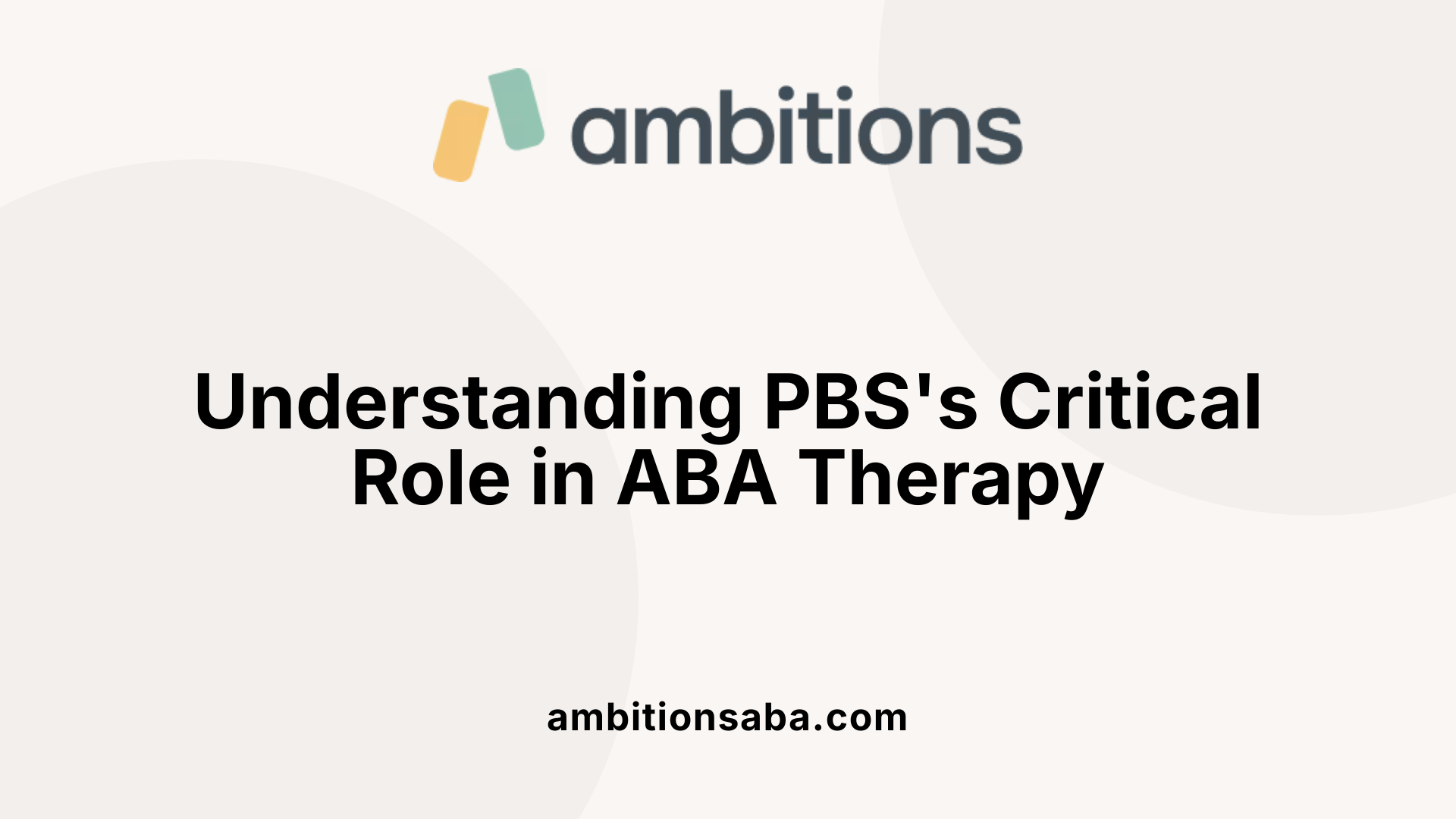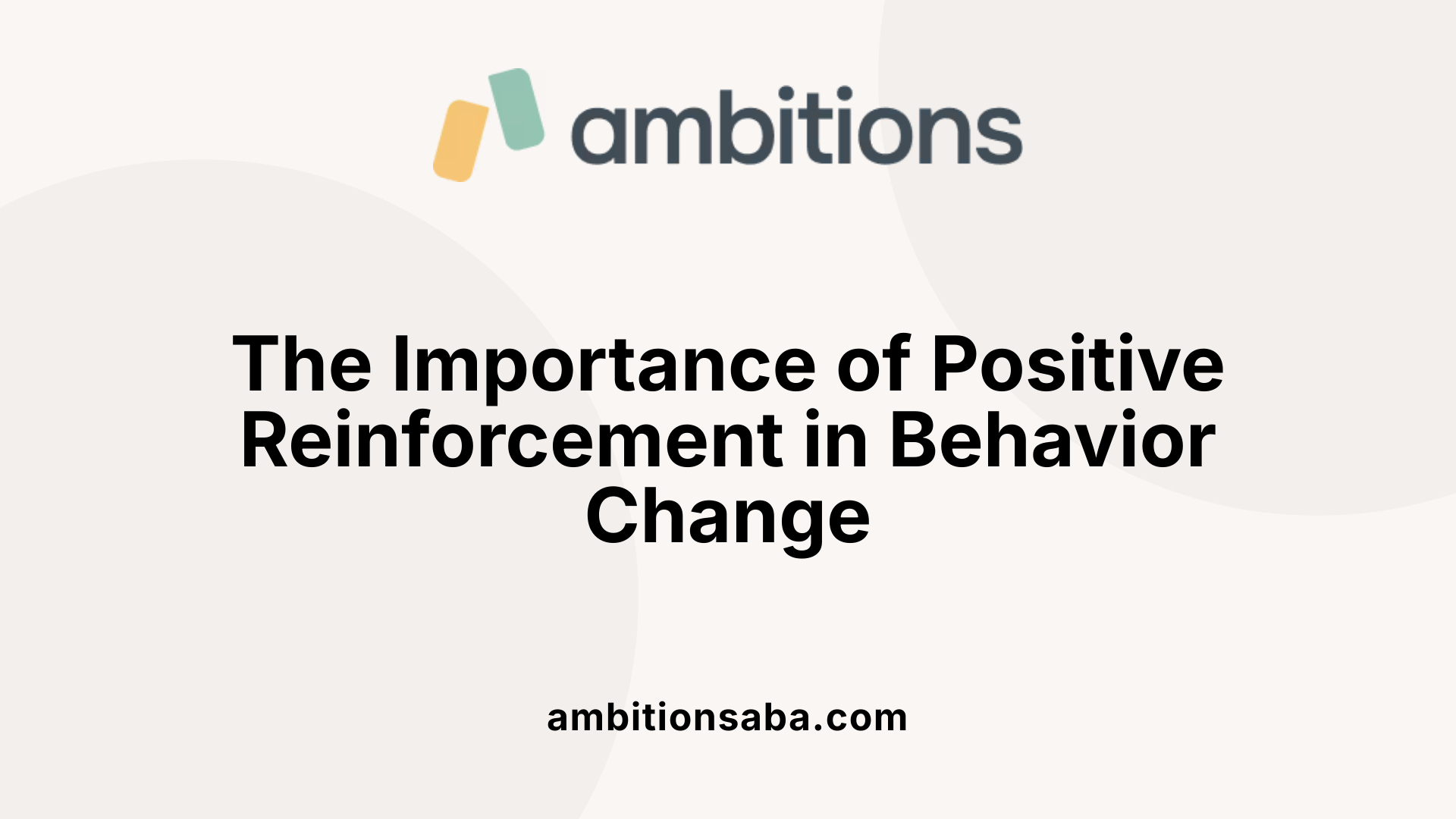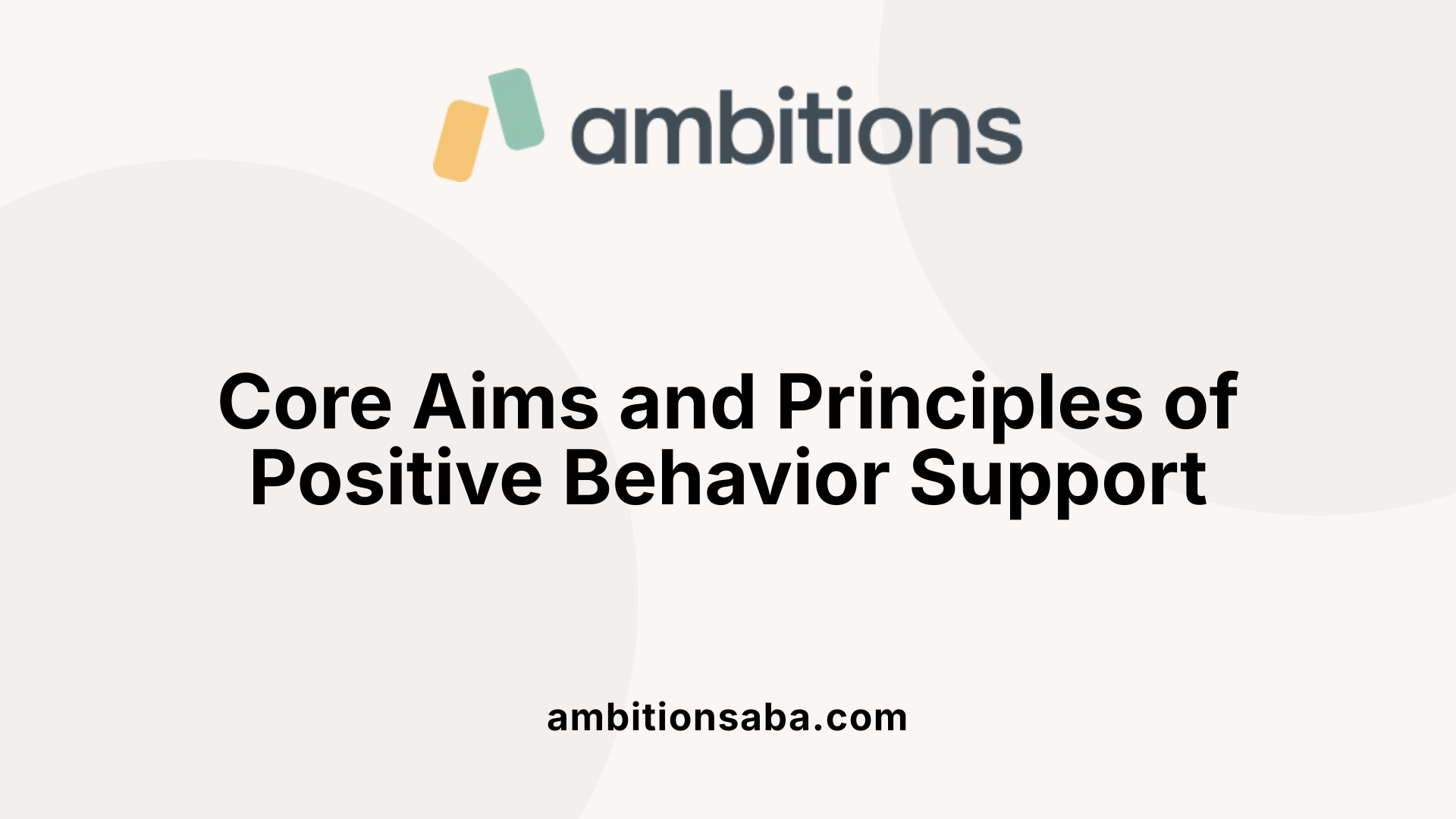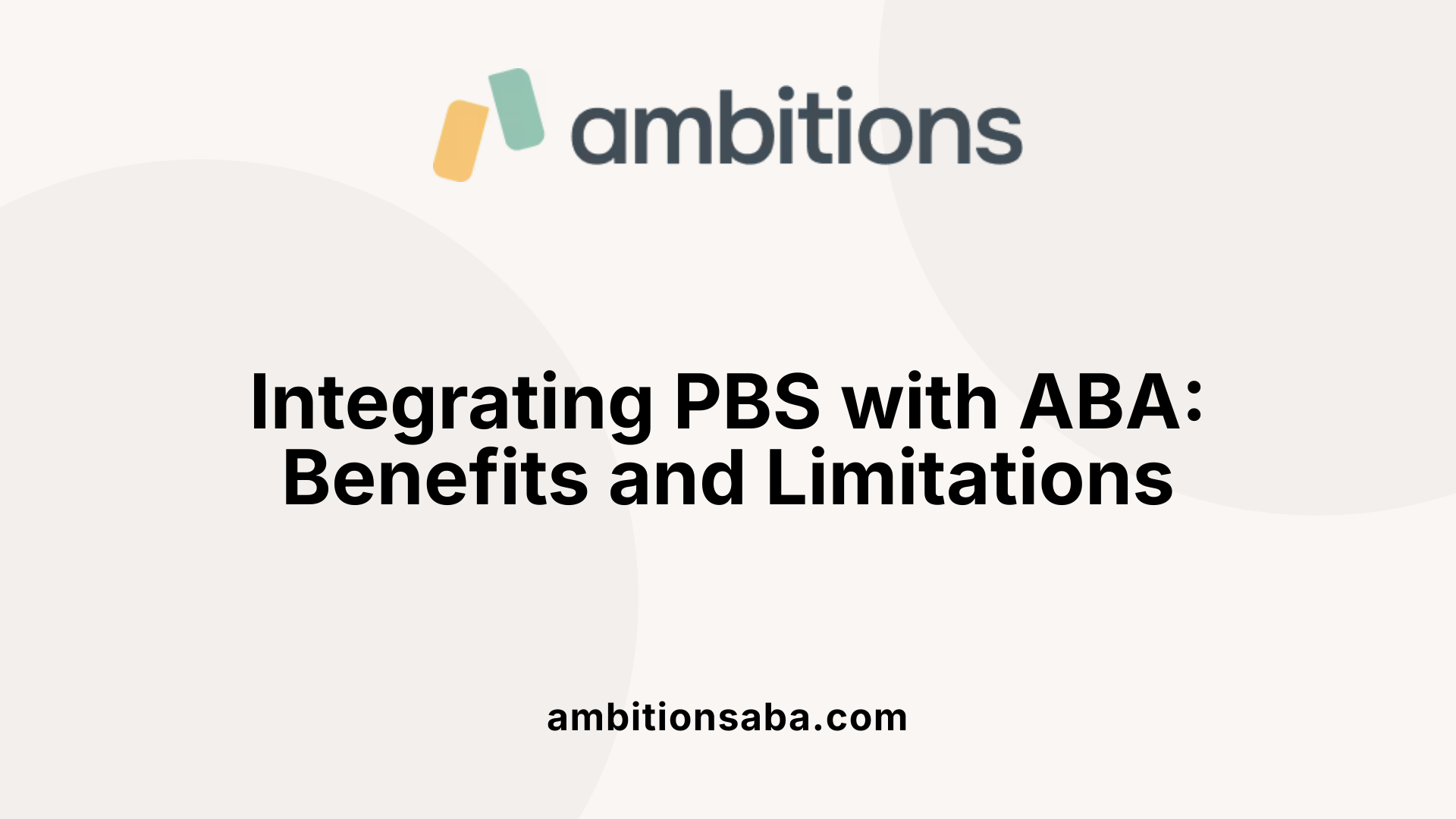Empowering Parents to Foster Communication Skills in Children with Autism
Understanding Positive Behavior Supports
Positive behavior supports (PBS) have become an integral part of Applied Behavior Analysis (ABA) therapy, offering innovative, nonaversive strategies to improve individuals' quality of life. Originally developed to move away from aversive techniques, PBS focuses on increasing positive behaviors and reducing problematic ones through comprehensive support systems. This article delves into the role, principles, and integration of PBS in ABA, examining its effectiveness, ethical implications, and the evidence supporting its use.
The Role of Positive Behavior Supports in ABA

What is the role of positive behavior supports (PBS) in Applied Behavior Analysis (ABA)?
Positive behavior supports (PBS) play a critical role in Applied Behavior Analysis (ABA) by providing a comprehensive framework for understanding and addressing behaviors in a positive manner. PBS employs strategies that promote desirable behaviors while reducing problem behaviors, fundamentally altering the individual’s environment and teaching new skills.
One essential technique used in PBS is the least to most prompting procedure. This method allows educators to begin teaching with the least intrusive prompts, granting students opportunities to respond independently. If a student struggles, more direct prompts can be introduced, leading to greater support as necessary. Through this structured approach, students with Autism Spectrum Disorder (ASD) and other developmental disabilities develop important skills while being encouraged to engage proactively.
How does PBS implement teaching strategies?
PBS incorporates various positive reinforcement strategies, such as praise and rewards, to encourage desirable behaviors. These methods help foster an environment where students feel supported and motivated to learn. Strategies may also include:
- Establishing clear expectations for behaviors
- Utilizing consistent language across different settings like school and home
- Engaging students using proximity and attention to reinforce positive choices
By integrating these techniques, PBS not only addresses challenging behaviors but also nurtures a culture of growth and empowerment among individuals.
How are PBS and ABA methods integrated?
Positive behavior support is inherently rooted in evidence-based practices from ABA, focusing on enhancing the quality of life for individuals. The integration of PBS and ABA methods involves the following:
- Individualized Interventions: Tailoring strategies to meet the unique strengths and needs of each individual.
- Collaboration across settings: Ensuring that behavioral support is consistently applied in various environments such as home and school, enabling better outcomes.
- Monitoring progress: Tracking broader quality of life changes rather than just isolated behavior modifications, which simplifies data collection for caregivers and educators.
This integration emphasizes the importance of creating a safe and supportive environment that promotes learning, allowing individuals to thrive while receiving the tailored assistance they need.
Why Positive Reinforcement Matters

Importance of Positive Reinforcement
Positive reinforcement is vital in Applied Behavior Analysis (ABA) therapy because it significantly boosts the likelihood of desirable behaviors. This is achieved by providing a reinforcing stimulus immediately after the desired action occurs. Therapists customize the reinforcers based on each learner’s preferences to ensure effectiveness. Reinforcers must be high-quality, appropriately sized, and contingent specifically on the behavior that is being targeted.
The ABC Model guides this process. In this model, A stands for antecedents, B for behavior, and C for consequences. By understanding how these elements interact, therapists can effectively utilize positive reinforcement in behavior modification.
Behavior Reinforcement Techniques
Effective applications of positive reinforcement include a range of techniques, such as:
- Praising academic achievements – Verbal acknowledgments help bolster self-esteem.
- Rewarding effective communication – Tokens or treats can motivate individuals to engage in dialogue.
- Setting clear expectations – Outlining what constitutes acceptable behavior reinforces motivation.
These strategies not only instill critical skills in children with autism but also create a supportive environment conducive to learning and emotional growth. Through reinforcement practices, individuals experience recognition for their achievements and efforts, which fosters resilience and a positive mindset.
Aims and Principles of PBS

What is the main aim of positive behavior support?
Positive behavior support (PBS) primarily aims to help individuals lead fulfilling lives. This involves understanding and addressing their behaviors while meeting their needs through supportive, non-harmful practices. By enriching their quality of life, PBS fosters positive social interactions across various environments such as home, school, and the community.
What are the principles and strategies of positive behavior supports?
The core principles of PBS emphasize a proactive and preventative approach to behavior management. Key strategies in PBS include:
- Teaching Behavior Expectations: Clearly outlining what is expected of individuals helps create a structured and predictable environment.
- Positive Reinforcement: Encouraging desired behaviors through praise and rewards fosters a supportive atmosphere that motivates individuals.
- Establishing Routines: Consistent routines reduce anxiety for individuals, making it easier for them to navigate their environments effectively.
PBS recognizes behavior as a means of communication, prompting educators and caregivers to engage with empathy. Techniques like pre-correcting, prompting, and utilizing nonverbal signals enhance communication and support behavior management.
Furthermore, the PBIS framework organizes support into three tiers—inclusive of universal, targeted, and individual strategies to cater to diverse needs. This tiered approach ensures appropriate interventions are available, improving social, emotional, and academic outcomes for everyone involved.
Integrating PBS with ABA Therapy

How do positive behavior supports integrate with ABA therapy and what are their benefits and limitations?
Positive Behavior Supports (PBS) and Applied Behavior Analysis (ABA) share a common goal of improving individuals' lives, particularly those with developmental disabilities. The integration of PBS into ABA therapy represents a shift towards more humane and non-aversive strategies. PBS emphasizes enhancing quality of life through positive interactions and proactive approaches, while ABA traditionally focuses on the analysis and modification of behavior through systematic observation and reinforcement.
Here are several key aspects of their integration:
- Holistic Approach: PBS promotes understanding behaviors in context, addressing environmental factors that contribute to issues rather than solely focusing on behavior modification. This approach is crucial in developing long-term strategies that support individual needs.
- Community Involvement: PBS encourages collaboration among caregivers, educators, and therapists, enhancing the support network for individuals undergoing ABA therapy. This collaboration fosters a sense of empowerment among families and encourages consistent application of behavior strategies in various settings.
- Positive Reinforcement: Both PBS and ABA utilize positive reinforcement, but PBS emphasizes its importance to create a supportive environment that nurtures growth. This technique cultivates self-esteem and resilience within individuals.
Benefits and Limitations of PBS in ABA Therapy
While PBS offers many benefits when integrated with ABA, it also faces certain limitations:
| Benefits of PBS | Limitations of PBS |
|---|---|
| Enhances individual dignity and engagement in interventions | May lack rigorous empirical research |
| Fosters a supportive environment for learning | Effectiveness may vary across individuals |
| Encourages community involvement and consistency | Implementation requires ongoing training |
| Focuses on proactive, preventative strategies | Can be resource-intensive for some environments |
Integrating PBS with ABA therapy aligns professional practice with evolving perspectives on behavior support. By emphasizing person-centered strategies, PBS enhances the overall effectiveness of ABA, ensuring that the goal is not just behavior change, but also the improvement of individuals' lives in multifaceted ways.
Ethical Considerations in PBS

What are the ethical implications of using positive behavior supports in ABA practices?
The ethical implications of using Positive Behavior Supports (PBS) in Applied Behavior Analysis (ABA) practices are profound. Central to PBS is the integration of care ethics, which underscores the importance of nurturing relationships and providing individualized care to enhance efficacy. Practitioners focus on the dignity and respect of the individuals they serve, aiming to improve their quality of life through positive, humane interventions. This ensures that ABA practices avoid causing physical or emotional harm to those involved.
PBS emphasizes teaching new functional behaviors instead of merely reducing problem behaviors. This approach highlights a commitment to personal growth, skill development, and inclusivity. However, implementing PBS poses certain challenges, such as maintaining procedural fidelity and ensuring that practitioners possess adequate training in ABA methodologies. Addressing these challenges can significantly affect the overall success of PBS interventions.
Moreover, PBS seeks to alleviate disparities in disciplinary practices common in educational settings, advocating for fairness and inclusive treatment across diverse populations. By focusing on positive behavior and proactive support, PBS represents a shift toward norms that prioritize ethical standards in behavior management.
| Ethical Focus Area | Description | Impact on Individuals |
|---|---|---|
| Individualized Care | Tailoring interventions to fit the unique needs of individuals. | Promotes dignity and respect in treatment efforts. |
| Prevention of Harm | Committing to nonaversive strategies and avoiding harm. | Reduces emotional and physical risks to individuals. |
| Empowerment of Individuals | Teaching functional behaviors and promoting autonomy. | Enhances self-efficacy and personal growth opportunities. |
| Fairness and Inclusivity | Addressing disparities in treatment, especially in schools. | Fosters a supportive environment for all individuals. |
Evidence-Based Practices and Research in PBS
Research findings on PBS
Positive Behavior Support (PBS) is grounded in research-based methodologies that demonstrate its effectiveness in enhancing the quality of life for individuals with behavioral challenges. Studies show that PBS not only decreases problem behaviors but also improves social interactions and overall satisfaction in various settings such as schools, homes, and community environments. The emphasis on teaching new skills and modifying environmental factors has proven crucial in promoting behavioral change and personal growth.
Evidence-based interventions
Interventions within PBS utilize evidence-based practices from Applied Behavior Analysis (ABA) and other disciplines to provide holistic support. These strategies include:
- Positive reinforcement: Encouraging desirable behaviors through praise and rewards.
- Replacement behaviors: Teaching individuals acceptable alternatives to challenging behaviors.
- Multi-tiered approaches: Implementing support at universal, targeted, and individualized levels.
By adopting these evidence-based practices, PBS aims to create supportive environments that foster resilience, self-esteem, and meaningful engagement in individuals’ everyday lives.
PBS in Educational and Therapeutic Contexts
PBS Application in Schools
Positive Behavior Support (PBS) emerged as a proactive strategy aimed at improving school environments by teaching expectations rather than relying on punitive measures. By fostering a culture of positivity, PBS enables educators to create routines that emphasize important social and behavioral skills. This supportive framework ensures that all students can access necessary reinforcement to cultivate better behavior.
Teachers play a vital role in implementing PBS strategies, utilizing approaches such as proximity to engage students and positive phrasing to redirect behaviors constructively. This collaborative effort significantly enhances the educational atmosphere by acknowledging positive behaviors and encouraging students to learn and grow.
Multitier Approaches in PBS
PBS adopts a structured, multi-tiered framework to address varying student needs effectively. It encompasses three tiers of support:
| Tier Level | Description | Targeted Students |
|---|---|---|
| Universal (Tier 1) | Strategies for all students to promote general positive behavior. | All students in the school. |
| Targeted (Tier 2) | Specialized support for students who require additional help. | Students struggling with specific behaviors. |
| Individual (Tier 3) | Intensive, individualized interventions for students with significant challenges. | Students needing tailored interventions. |
Implementing these tiers ensures that every student receives appropriate support based on their unique challenges, fostering an inclusive school environment where all individuals can thrive.
Community and Stakeholder Involvement in PBS
Collaboration in PBS interventions
Collaboration is a cornerstone in the implementation of Positive Behavior Support (PBS). Engaging typical caregivers, educators, therapists, and members of the community enhances the effectiveness of interventions. By empowering caregivers to participate in the assessment, design, and execution phases, PBS fosters a shared responsibility that leads to better outcomes for individuals. This collaborative approach reduces dependency on external professionals, allowing interventions to be more sustainable and relevant to the individual's life.
Stakeholder roles in PBS
In PBS, stakeholders assume distinct yet interrelated roles that significantly influence the success of behavior support plans. Educators are key in establishing structured routines and reinforcing positive behaviors in classroom settings. Therapists, particularly behavior analysts, provide expert guidance on behavioral principles, helping teachers implement PBS strategies effectively. Caregivers play a critical role by reinforcing interventions at home, maintaining consistency across different environments.
| Stakeholder | Role in PBS | Impact on Implementation |
|---|---|---|
| Educators | Establish classroom routines and expectations | Promotes consistency in behavior reinforcement |
| Therapists | Provide expertise and strategic guidance | Enhances understanding of behavioral principles |
| Caregivers | Reinforce behaviors in home settings | Ensures continuity of support across environments |
Conclusion: The Future of PBS in ABA
Positive behavior supports (PBS) offer a comprehensive, ethical, and holistic approach to behavioral interventions within ABA therapy. By focusing on enhancing quality of life through non-aversive methods, PBS complements traditional ABA techniques, promising improved outcomes for individuals with behavioral challenges. As further research validates its efficacy, PBS is poised to play a central role in both educational and clinical settings, fostering environments where individuals can thrive with dignity and independence.
References
- Positive Behavior Support and Applied Behavior Analysis - PMC
- CIEES APBS - What is Positive Behavior Support
- Positive Behavior Support for Individuals with Behavior Challenges
- Maximizing Success with ABA: The Importance of Behavior Supports
- Positive Behavior Support Plan for Autism: What are the Benefits?
- Positive Behavioral Interventions and Support - How to ABA
- The Importance of Positive Reinforcement in Behavior Support
- ABA Therapy | Applied Behavior Analysis | PBS Corporation
- Positive Behavior Support Examples in the Classroom
- ABA 101: Positive Reinforcement - Behavior TLC

